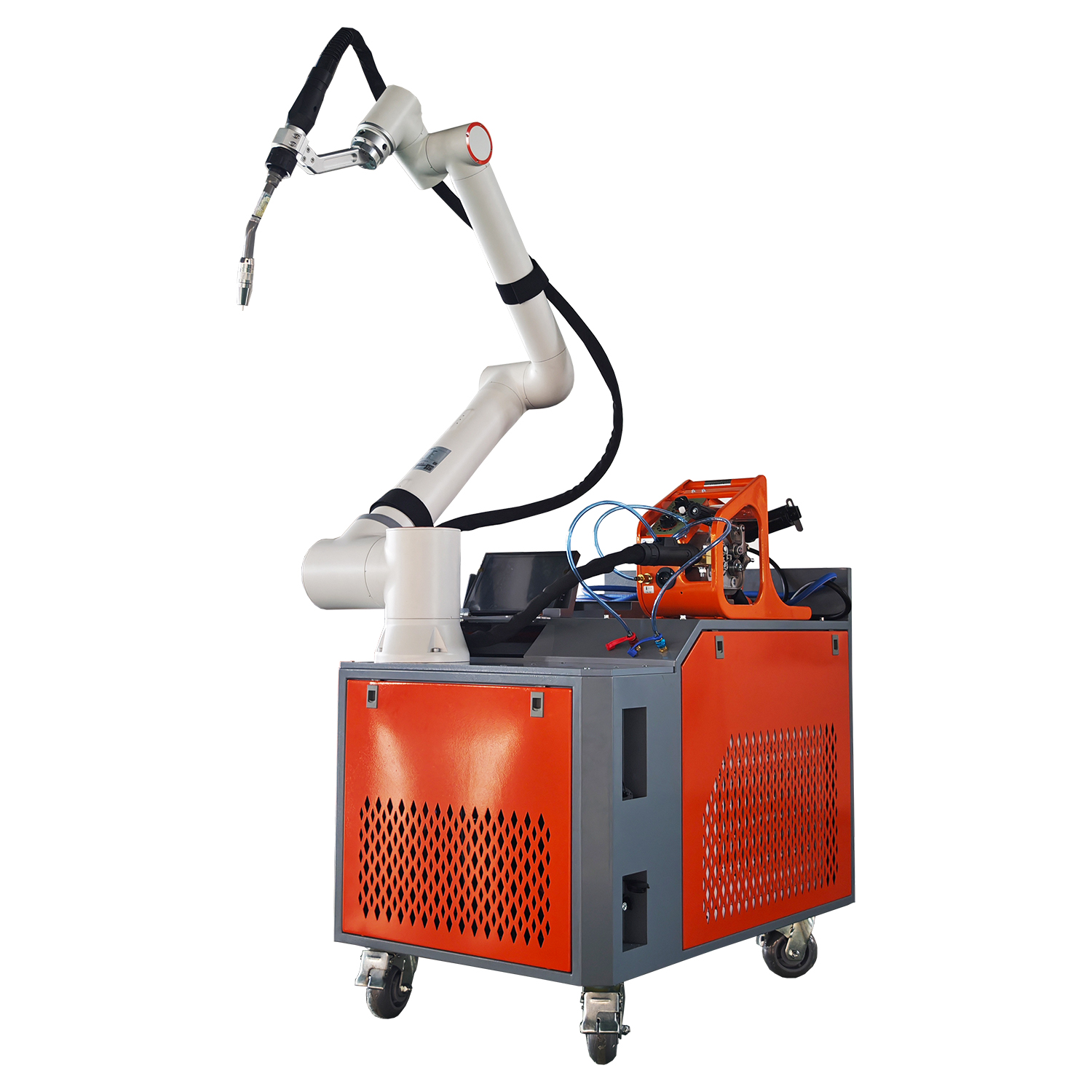NBC-315Y 220V/380V 300A IGBT Inverter Portable welder Built-in wire feeder 2T/4T MIG/MAG(GMAW)
Cat:Gas shielded welding machine
1、The machine adopts a phase-shifted full-bridge inverter main circuit...
See DetailsThe adaptability of Robot Welding Machine can be significantly improved through modular design, especially when facing diversified production needs, different workpiece types or process requirements. The core idea of modular design is to decompose the equipment into multiple independent but interchangeable functional modules, so as to achieve flexible configuration and rapid adjustment. The following is a detailed analysis and explanation:
1. Basic concept of modular design
Modular design refers to decomposing the robot welding system into several functional units (such as robot arm, welding gun, fixture, control system, etc.), each of which can be independently developed, replaced or upgraded. Through this design, users can flexibly combine different modules according to specific needs to meet the requirements of specific tasks.
2. Specific ways to improve adaptability
(1) Modularity of robot arm
Interchangeable robot arm: Different models of robot arms are suitable for different working ranges and load capacities. For example, light robot arms are suitable for fine welding of small workpieces, while heavy robot arms are suitable for high-strength welding of large workpieces.
Extended joints: Modular joint design allows users to increase or decrease degrees of freedom (DOF) as needed to adapt to complex three-dimensional welding paths.
Compatibility: The interfaces of the robot arm are standardized, which facilitates seamless integration with other modules (such as welding guns and sensors).
(2) Modularity of welding guns and tool heads
Replaceable welding guns: Different types of welding guns can be quickly replaced according to the requirements of the welding process (such as MIG/MAG, TIG, spot welding, laser welding).
Multi-functional tool heads: Some modular welding guns support multiple functions (such as welding, cutting, grinding), thereby reducing equipment switching time.
Quick-change device: Using quick-change coupler technology, welding guns can be replaced in seconds, improving production efficiency.
(3) Modularity of fixtures and tooling
Flexible fixtures: Modular fixtures can be quickly adjusted according to the shape and size of the workpiece without the need to customize special fixtures.
Standardized interface: The fixture design adopts a unified interface to facilitate docking with the robot welding system.
Multi-station design: Modular tooling can support multi-station operation, thereby achieving continuous production and fast line change.
(4) Modularity of control system
Extensible control module: The control system can add or remove functional modules (such as path planning, real-time monitoring, data analysis) according to task requirements.
Open architecture: Modular control systems usually adopt open software architecture and support third-party plug-ins and custom programming.
Offline programming support: Modular control systems can quickly generate welding paths through offline programming software (such as RobotStudio, KUKA.Sim), reducing debugging time.
(5) Modularity of auxiliary equipment
Mobile platform: Equipping the robot welding machine with a modular track system or AGV (automatic guided vehicle) can expand its working range and adapt to the welding needs of large workpieces.
Dust removal and protection module: Integrated modular dust removal equipment or protective cover can be dynamically adjusted according to the characteristics of the welding task.

Sensor module: Adding visual sensors, force sensors or other detection modules can realize functions such as weld tracking and quality monitoring.
3. Advantages of modular design
(1) Flexibility
Modular design enables robot welding machines to quickly adapt to different production tasks and process requirements without replacing the entire set of equipment.
For small-batch, high-variety production modes, modular design can significantly shorten the line change time and debugging cycle.
(2) Scalability
Users can gradually upgrade the equipment according to actual needs, such as adding new functional modules or improving the performance of existing modules.
Modular design also supports the integration of future technologies, such as artificial intelligence, the Internet of Things, and big data analysis.
(3) Cost-effectiveness
Modular design reduces the initial investment cost of the equipment because users only need to purchase the modules currently required.
In long-term use, modular design reduces maintenance and replacement costs because damaged modules can be repaired or replaced individually without replacing the entire system.
(4) Ease of use
Modular design simplifies the operation and maintenance process of the equipment, and users can master the replacement and configuration methods of modules through simple training.
Standardized interfaces and plug-and-play functions further improve the ease of use of the equipment.
Through modular design, the Robot Welding Machine has been significantly improved in terms of flexibility, scalability, cost-effectiveness and ease of use. Whether facing complex and changing production needs or needing to quickly adapt to new technologies, modular design provides the robot welding machine with strong adaptability.
Contact Us